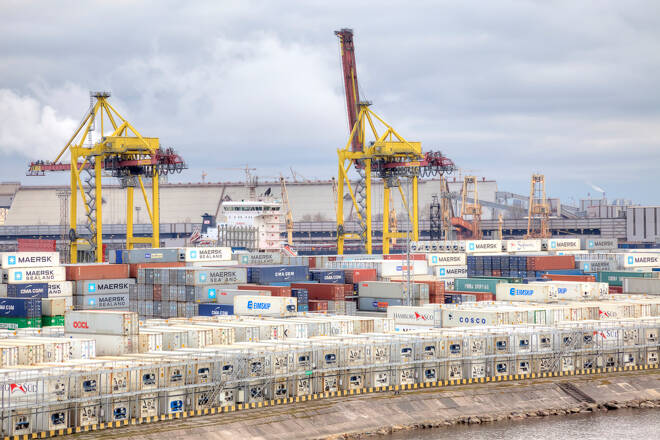Advertisement
Advertisement
Eurozone Composite PMI Hits an Eight-Month High in February
By:
It was a busy morning, with the Eurozone Composite PMI signaling an improving macroeconomic environment. However, overseas demand remained weak.
It was another busy day on the European economic calendar. Early in the European session, German trade data drew interest. The German Composite PMI sat at the bottom of the euro area table for February, suggesting a lackluster trade environment.
However, the German trade surplus widened from €9.7 billion to €10.8 billion in January, suggesting a less gloomy macroeconomic environment. The numbers sent mixed messages, with imports signaling weak demand, which aligned with the February PMI survey. In January, imports fell by 3.4% after a 5.6% slide in December, while exports increased by 2.1%. Exports declined by 6.3% in January.
While the trade data delivered early EUR/USD support, the Services and Composite PMI numbers were of more influence.
The Spanish economy continued to impress, with the Services PMI surging from 52.7 to 56.7 in February. Italy also recorded a pickup in service sector activity, with the Services PMI rising from 51.2 to 51.6.
However, the finalized numbers from France and Germany were mixed. The French services PMI increased from 49.4 to 53.1, up from a prelim 52.8, with the German Services PMI rising from 50.7 to 50.9, down from a prelim 51.3.
Finalized Eurozone Composite PMI Comes in Softer than Prelim
For the Euro area, the Services PMI increased from 50.8 to 52.7, down from a prelim 53.0. The Composite PMI rose from 50.3 to 52.0, down from a prelim 52.3.
According to the Finalized Composite Survey,
- The Eurozone economy expanded at its most marked pace since June 2022.
- Incoming new business increased for the first time since May 2022, though new export sales fell for a twelfth consecutive month.
- Business confidence rose to a 12-month high but sat below pre-Ukraine war levels.
- Firms continued to hire across the private sector, with the pace of hiring above the series average.
- Across the manufacturing sector, input price inflation slowed while service sector companies reported a sharp increase in operating costs because of wage pressures.
By member state, Spain ranked first, with the Composite PMI hitting a nine-month high of 55.7. German sat at the bottom of the table, with an eight-month high of 50.7.
While the PMI components are unlikely to influence the March monetary policy decision, wage growth and weak demand from overseas will be of concern.
After the ECB policy meeting minutes on Thursday, investors need to monitor ECB member speeches.
EUR/USD Responds to Euro Area Composite PMI
Ahead of the PMI numbers, the EUR/USD fell to an early low of $1.05960 before rising to a high of $1.06232.
However, in response to the PMIs, the EUR/USD rose to a session high of $1.06292 before easing back.
At the time of writing, the EUR/USD was up 0.17% to $1.06146. Less hawkish FOMC Member Bostic commentary delivered support ahead of the PMI numbers.
Up Next
Looking ahead to the US session, it is a busy day on the US economic calendar. The all-important ISM Non-Manufacturing PMI for February will draw plenty of investor interest.
We expect market sensitivity to the headline PMI and sub-components, with the ISM Non-Manufacturing Prices Index the one to watch.
Other stats include finalized S&P Global Services and Composite PMI numbers that should play second fiddle to the ISM survey-based numbers.
With the services sector in the spotlight, investors need to monitor FOMC member chatter. FOMC members Logan, Bostic, and Bowman will speak today. Investors need to work out how many members favor a 50-basis point rate hike for March.
On Thursday, FOMC member Bostic favored a 25-basis point rate hike in March.
About the Author
Bob Masonauthor
With over 28 years of experience in the financial industry, Bob has worked with various global rating agencies and multinational banks. Currently he is covering currencies, commodities, alternative asset classes and global equities, focusing mostly on European and Asian markets.
Advertisement
